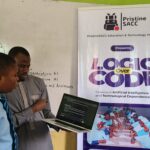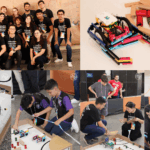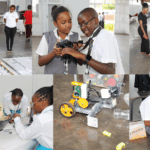“Free, fast, for all, the Journal aims to promote accessibility of research to academics and industry researchers across the world,” says the ITU Journal’s Editor-in-Chief, Ian F. Akyildiz.
“The publication is free of charge for both readers and authors, highlighting the true sense of the term, ‘open access’,” says Akyildiz. “Our objective is to become the premier international forum for addressing all aspects of evolving and future technologies in the telecommunications field.”
< Download the full first issue >
The ITU Journal on Future and Evolving Technologies provides complete coverage of all communications and networking paradigms.
Five upcoming special issues will address Bio-NanoThings for healthcare, Internet of Everything, Terahertz communications, AI and machine learning for 5G, and wireless communication systems beyond 5G.
The ITU Journal is the latest initiative to contribute to the growing strength of ITU’s relationship with academia.
“In contributing to the Journal and the work of ITU, leading minds in science and engineering are providing decision-makers in the public and private sector with unique insight into the latest developments in ICT and prospects for future innovation,” said ITU Secretary-General Houlin Zhao.
ITU Kaleidoscope academic conferences share research into topics of growing strategic relevance to ITU membership. ITU Academia members participate alongside policymakers and industry-leading engineers in ITU expert groups responsible for radiocommunication, standardization, and development.
“Contributions from research communities bring greater strength to the work of ITU, and participation in ITU helps these communities to increase the impact of their research,” said Chaesub Lee, Director of the ITU Telecommunication Standardization Bureau.
The first issue of the ITU Journal shares unique contributions to research in signal processing and communications in high-mobility scenarios, the Internet of Things, vehicular communications, pandemic mitigation, and AI and machine learning for 5G and beyond. It also discusses the evolution of infrastructure sharing and why sharing has become a commercial reality in the 5G context.
< Download the full first issue >
Navigate directly to papers of interest:
“Backscatter communication with passive receivers: From fundamentals to applications” examines the full potential of backscattering in the realization of the Internet of Things (IoT) and presents an overview of recent innovations in hardware architecture for backscatter modulation.
Milutin Stanaćević, Akshay Athalye, Zygmunt J. Haas, Samir R. Das, Petar M. Djurić
“Non-coherent massive MIMO-OFDM for communications in high-mobility scenarios” proposes the use of non-coherent demodulation schemes to improve performance in high-mobility scenarios and also highlights potential areas for new research.
Kun Chen-Hu, Yong Liu, Ana Garcia Armada
“MSICA: Multi-Scale Signal decomposition based on independent component analysis with application to denoising and reliable multi-channel transmission” examines invaluable tools in digital signal processing.
Abolfazl Hajisami, Dario Pompili
“SDN-based Sociocast group communications in the Internet of Things” looks into new disruptive network-layer solutions to address challenges related to traditional group communication solutions and their tendency to lack control policies on involved endpoints.
Luigi Atzori, Claudia Campolo, Antonio Iera, Giuseppe Massimiliano Milotta, Giacomo Morabito, Salvatore Quattropani
“The Internet of Metamaterial Things (IoMMT) and other software enablers” introduces a new paradigm, exploring how artificial materials with real-time tunable physical properties will enrich the IoT ecosystem.
Christos Liaskos, Georgios G. Pyrialakos, Alexandros Pitilakis, Ageliki Tsioliaridou, Michail Christodoulou, Nikolaos Kantartzis, Sotiris Ioannidis, Andreas Pitsillides, Ian F. Akyildiz
“Design and analysis of a reconfigurable intelligent meta-surface for vehicular networks” also introduces a new paradigm, this time for vehicular communications, through the manipulation of electromagnetic waves.
Mohammad Ojaroudi, Valeria Loscrí, Anna Maria Vegni
“A blueprint for effective pandemic mitigation” provides a framework to improve contact tracing and testing strategies with the help of wireless technologies and advances in sequential learning. The paper also provides numerical results demonstrating the efficacy of the described testing strategy.
Rahul Singh, Wenbo Ren, Fang Liu, Dong Xuan, Zhiqiang Lin, Ness B. Shrof
“Machine learning-assisted cross-slice radio resource optimization: Implementation framework and algorithmic solution” describes the feasibility of deploying ML-assisted solutions for radio resource optimization across 5G network slices.
Ramon Ferrús, Jordi Pérez-Romero, Oriol Sallent, Irene Vilà, Ramon Agustí
“6G vision: An ultra-flexible perspective” considers AI and integrated sensing among potential key enablers for the flexibility of future networks and offers a general framework for future networks to incorporate the enablers described.
Ahmet Yazar, Seda Doğan Tusha, Huseyin Arslan
“On the evolution of infrastructure sharing in mobile networks: a survey” provides a complete picture of the evolution of infrastructure sharing both over time and its growth into research branches such as performance evaluation and resource management. It also highlights the relationship between this evolution and the decoupling of infrastructure from services, wireless network virtualization and multi-tenancy in 5G networks – and why this evolution makes sharing a commercial reality in the 5G context.
Lorela Cano, Antonio Capone, Brunilde Sansò
















